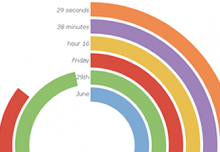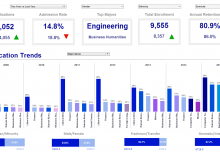Earlier this year, Style Intelligence 11.5 was released to the public, bringing with it a host of new features and substantial visual improvements to the User Portal. Today, we’re going to focus on several major features that should not be overlooked.
Access to Enterprise Manager can now be granted on a user, group, and role basis for multi-tenant environments
Users, roles, and groups can be managed using the functions available under the Users tab. The navigation tree on the page under this tab includes two nodes: ‘Users’ and ‘Roles’. The ‘Users’ node lists all of the users and groups in the system and the ‘Roles’ node lists all of the roles.
A ‘Group’ usually refers to a collection of people (e.g., a project team, the sales department, etc). Users belonging to the same group may have different functions or ‘Roles’ (e.g., Manager, Developer, Analyst, Tester, etc). Groups are organizational in nature, while roles are more functional in nature. Although this is the design philosophy and the intent of having both roles and groups, the way they are actually used depends on the discretion of the administrator and could vary in different organizations.
The Selection Tree component now supports recursive hierarchy defined by parent and child IDs
You can now create a Selection Tree from recursive hierarchy information. The “Child ID” is the ID of the node itself, while the “Parent ID” is the ID of the node’s immediate parent. Nodes that lack a “Parent ID” comprise the top level of the tree.
The chart target line feature is enhanced to include target bands and statistical measures
A target line is a horizontal or vertical line drawn on the chart that generally denotes an ideal value (goal or threshold) or representative value (average, minimum, etc.). A target band is a horizontal or vertical band drawn on the chart that generally denotes either an ideal range (e.g., goal zone) or representative range (e.g., span of maximum to minimum). A statistical measure is a line or region drawn on the chart to represent one or more statistical quantities derived from the data (confidence intervals, percentiles, etc.).
For a full list of version 11.5 features, click here.




